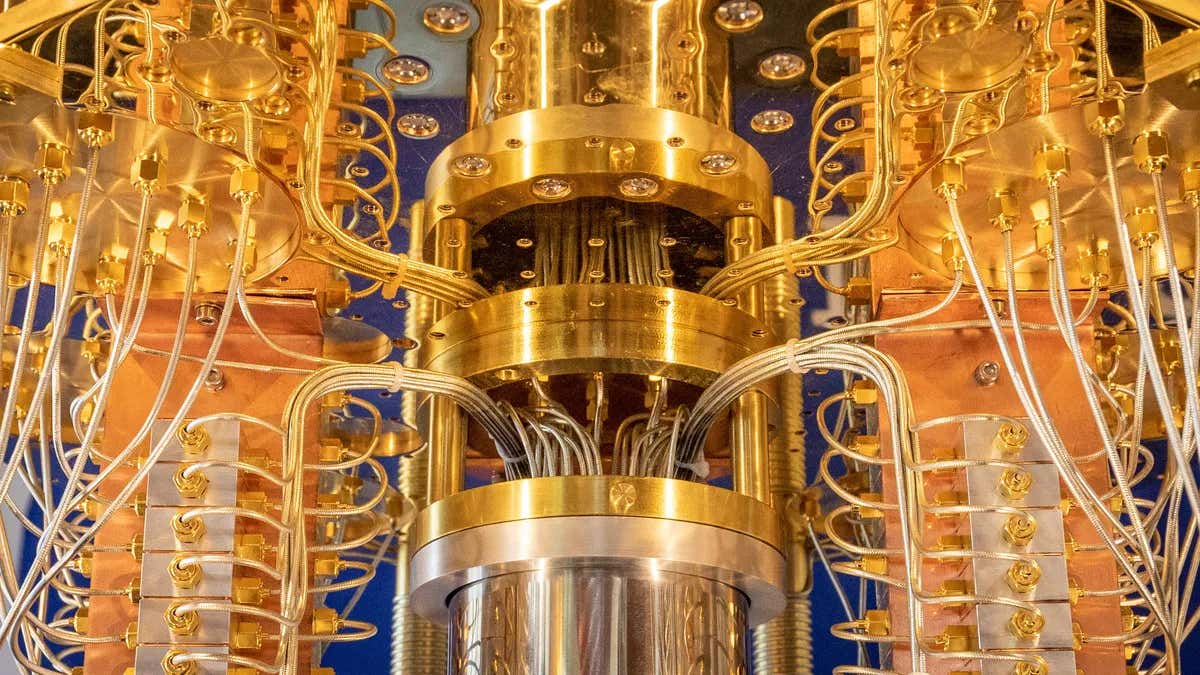Artificial atoms are a quantum leap forward in secure communication
Researchers have successfully conducted the first intercity QKD experiment using a deterministic single-photon source. This achievement is set to revolutionize the way confidential information is protected against cyber threats.

Quantum Computer (CREDIT: CNET)
Conventional encryption relies heavily on complex mathematical algorithms and the limits of today's computing power. However, the advent of quantum computers is making these traditional methods increasingly vulnerable. This has led to the necessity of quantum key distribution (QKD), a cutting-edge technology that leverages the unique properties of quantum physics to secure data transmission.
Although QKD has been continuously refined, expanding its application to large networks has been a challenge, primarily due to the limitations of current quantum light sources.
In a groundbreaking development, a team of scientists in Germany, led by Professor Fei Ding from Leibniz University of Hannover (LUH), Professor Stefan Kück from Physikalisch-Technische Bundesanstalt (PTB), and Professor Peter Michler from the University of Stuttgart, successfully conducted the first intercity QKD experiment using a deterministic single-photon source. This achievement is set to revolutionize the way confidential information is protected against cyber threats.
Central to this advancement are semiconductor quantum dots (QDs), often described as "artificial atoms" in the quantum world. These QDs have shown great promise in producing the quantum light necessary for quantum information technologies. The success of this experiment highlights the potential of semiconductor single-photon sources for enabling a secure, long-distance quantum internet in practical, real-world scenarios.
Professor Fei Ding elaborated on the significance of the breakthrough: “We work with quantum dots, which are tiny structures similar to atoms but tailored to our needs. For the first time, we used these ‘artificial atoms’ in a quantum communication experiment between two different cities. This setup, known as the ‘Niedersachsen Quantum Link,’ connects Hannover and Braunschweig via optical fibre.”
The intercity experiment was conducted in the German state of Niedersachsen, utilizing a 79-kilometer-long fiber-optic link between LUH in Hannover and PTB in Braunschweig. In the experiment, single photons were encrypted with polarization at LUH, where Alice, the transmitter, prepared them.
These photons were then sent through the fiber-based quantum channels to PTB in Braunschweig, where Bob, the receiver, used a passive polarization decoder to decrypt the information. This experiment marks the first quantum communication link in Lower Saxony, Germany.
Related Stories
As a result of their efforts, the researchers achieved stable and rapid transmission of secret keys. They confirmed that positive secret key rates (SKRs) are attainable for distances up to 144 kilometers, corresponding to a 28.11 dB loss in the laboratory.
Additionally, they ensured a high-rate secret key transmission with a low quantum bit error ratio (QBER) for 35 hours over the deployed fiber link.
Dr. Jingzhong Yang, the first author of the study, remarked on the significance of these results: “Comparative analysis with existing QKD systems involving SPS reveals that the SKR achieved in this work goes beyond all current SPS-based implementations. Even without further optimization of the source and setup performance, it approaches the levels attained by established decoy state QKD protocols based on weak coherent pulses.”
The potential applications of quantum dots extend beyond QKD. Researchers believe that QDs could play a crucial role in other quantum internet applications, such as quantum repeaters and distributed quantum sensing, due to their ability to store quantum information and emit photonic cluster states.
This experiment underscores the feasibility of integrating semiconductor single-photon sources into realistic, large-scale, and high-capacity quantum communication networks.
The need for secure communication has always been a priority, and quantum communication is a promising solution. By utilizing the quantum characteristics of light, messages can be transmitted with unparalleled security, ensuring they cannot be intercepted.
As Professor Ding pointed out, “Quantum dot devices emit single photons, which we control and send to Braunschweig for measurement. This process is fundamental to quantum key distribution.” He expressed his excitement about the outcome of this collaborative effort: “Some years ago, we only dreamt of using quantum dots in real-world quantum communication scenarios. Today, we are thrilled to demonstrate their potential for many more fascinating experiments and applications in the future, moving towards a ‘quantum internet.’”
This breakthrough not only advances the field of quantum communication but also opens the door to future innovations in quantum technology, making the dream of a secure quantum internet closer to reality.
Note: Materials provided above by The Brighter Side of News. Content may be edited for style and length.
Like these kind of feel good stories? Get The Brighter Side of News' newsletter.
Joshua Shavit
Science & Technology Writer | AI and Robotics Reporter
Joshua Shavit is a Los Angeles-based science and technology writer with a passion for exploring the breakthroughs shaping the future. As a contributor to The Brighter Side of News, he focuses on positive and transformative advancements in AI, technology, physics, engineering, robotics and space science. Joshua is currently working towards a Bachelor of Science in Business Administration at the University of California, Berkeley. He combines his academic background with a talent for storytelling, making complex scientific discoveries engaging and accessible. His work highlights the innovators behind the ideas, bringing readers closer to the people driving progress.



